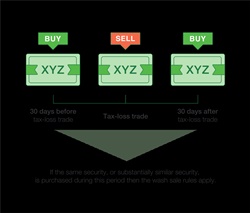Defining Macaulay Duration
The Macaulay duration is referred to as the cash flow’s weighted average term from a bond to maturity. The weight of every cash flow is comprehended by dividing the cash flow’s present value by the price. Such Portfolio managers who utilize Immunization strategy use this duration frequently.
Macaulay Duration Formula

Here:
- t = time period
- C = Periodic coupon payment
- y = Periodic yield
- n = Total number of periods
- M = Maturity value
- Current Bond Price = present value of cash flows
Explaining the Macaulay Duration
This Macaulay duration metric has been named after Frederick Macaulay – the creator. This duration can be regarded as the economic balance point of a cash flow group. Another way to assess the statistic is that it’s the weighted average number of those years that an investor has to maintain a bond position until the cash flow’s present value of the bond is equal to the bond’s amount paid.
The yield to maturity, coupon, maturity and the price of a bond are factored while assessing the duration. If everything is equal, the duration increases with an increase in maturity. However, with an increase in the coupon of the bond, there is a decrease in the duration.
Example of Macaulay Duration Calculation
The Macaulay duration calculation is quite simple. Suppose a bond has a Face Value of Rs. 1000 and it is paying 6% coupon and gets matured in three years. The interest rate is 6% annually with semi-annual compounding.
The bond is paying coupon twice in a year and is paying the principal upon the final payment. Keeping this in mind, the cash flows anticipated up to the forthcoming three years will be:
- Period 1: Rs. 30
- Period 2: Rs. 30
- Period 3: Rs. 30
- Period 4: Rs. 30
- Period 5: Rs. 30
- Period 6: Rs. 1030
Now that the cash flows and periods are known, a discount Factor should be calculated for every period. This will be calculated as 1 / (1 + r)n, where r is representing the interest rate and n is signifying the period number. R, when compounded semi-annually will be 6%/2 = 3%. Therefore, the discount factor will be:
- Period 1 Discount Factor:1÷(1+.03)1=0.9709
- Period 2 Discount Factor:1÷(1+.03)2=0.9426
- Period 3 Discount Factor:1÷(1+.03)3=0.9151
- Period 4 Discount Factor:1÷(1+.03)4=0.8885
- Period 5 Discount Factor:1÷(1+.03)5=0.8626
- Period 6 Discount Factor:1÷(1+.03)6=0.8375
Now, to figure out the cash flow’s present value, you would have to multiply the cash flow of a period by the period number and then by its corresponding discount factor:
Talk to our investment specialist
- Period 1:1×Rs.30×0.9709=Rs. 29.13
- Period 2:2×Rs.30×0.9426=Rs. 56.56
- Period 3:3×Rs.30×0.9151=Rs. 82.36
- Period 4:4×Rs.30×0.8885=Rs. 106.62
- Period 5:5×Rs.30×0.8626=Rs. 129.39
- Period 6:6×Rs.1,030×0.8375=Rs. 5,175.65
- Total = Rs. 5579.71
- Current Bond Price = Rs. 1000
Macaulay Duration = 5579.71 / 1000 =
5.58
All efforts have been made to ensure the information provided here is accurate. However, no guarantees are made regarding correctness of data. Please verify with scheme information document before making any investment.












